Synopsis:
Consumers,Users,Enterprises,Companies,Institutes etc.have an insatiable demand for their technology. Be it a Cellular phone, a television, cooking gadget in the kitchen or refrigerator everyone is eyeing for latest technology with new features. With the advent of the Internet, the most-wanted feature is better, faster access to information. Even if it asks for paying something extra for cellular subscribers on their basic bills for procuring these additional features viz. instant messaging, Internet access, stock quotes on their phones they are welcomed. High-speed wireless connectivity is asked for supporting such a powerful system by persuasive efforts (for example Bluetooth and 802.11).-Popular IT trends.
Technology analysts and pundits love to speculate about the new advances the next twelve months might bring. Countless organizations publish their forecasts of what will happen in the technology industry. Expert opinions are collected to generate a list of trends that are important to people in IT infrastructure. Trends such as Internet of Things and cloud computing are household words in tech so much so that they even have their own topic sections on the website. These do draw close attention as both are poised to achieve new levels of mainstream prominence the year around. Technology as block chain and containerization (although fairly young) are worth to be watched as they are likely to attain stupendous importance in the coming years. Similarly, development trends such as micro-services architecture, machine learning, end-user computing trends, wearable and virtual reality are going to grab headlines. However, for all these to prosper IT industry is must have proper infrastructure to support the fast vulnerable developing technology. Inadvertently, no one can for sure predict as to which technology will predominate the IT industry and professional life in 2016 but having perceived a few promising are well worth talking as below: (POPULAR IT TRENDS)
The Internet of Things or IoT:
is apprehended to be one of the most promising technological changes both in the present and in the coming times as it is subject to a lot of attention both from the media and the analysts. It eventually involves installing chips, sensors in a great variety of objects, subsequently connecting these objects to the internet. Mind you these objects can be anything viz. wearable devices ,vehicles ,home appliances, thermostats, locks or even something as minute as a small adhesive tag which could be utilized to track almost anything. Motivated by this, manufacturers to initiate have started rolling out fitness trackers, smart watches and also smart home devices. However, analysts predict that by 2018 there will be more than 20-22 billion IoT devices installed in the market. Entrepreneurs and enterprises could subsequently look for new and innovative ways of communication with customers, also new ways to track employees and various other opportunities. Now the real challenge the IT will face is, exploring ways to store and analyze data generated by all these smart new devices. Voila! That surely is an exciting feat!!
Cognitive Computing-Machine learning:
Artificial intelligence has always been a fascinating factor for scientists especially in the present competitive computing era. A distant possibility in the past is becoming a reality in the present. Consequently many big companies viz. IBM, Google, Facebook, Apple and Microsoft are investing in a big way in cognitive computing research and machine learning. Interestingly, it is fascinating to note that all these systems function more or less like a human brain. They can understand natural language, are equally at ease to identify and categorize the content of images and video also with equal ease can fairly make good educated guesses and hypotheses in response to questions.
Micro services architecture:
Gearing with the enthusiasm of changes in IT industry, Developers are beginning to embrace a new approach in the context of developing applications and web apps. Apparently, in micro services architecture the applications are of very small size (pieces) and via APIs communicate with each other. This method makes it very easy for users to roll out updates that happen frequently and help enabling continuous delivery and agile development methodologies. Resultant with increasing frequency micro services is visible in enterprises. This is a very positive effort to achieve better software architecture as successfully operated at eBay, Google, Netflix and Wall-Mart.
Adaptive security:
Today nearly all large companies are subjected to cyber attacks successfully. This relates to the prevalent existential security measures which are proving highly in-efficient in keeping up with the rapid evolving nature of attacks. It is therefore highly recommended (Gartner) that organisations should go for “adaptive security”. A model that uses predictive analytics to identify and anticipate where exactly the attackers will target next. However organizations are in the tendency to exploit more cloud-based security as well as open APIs for partners and customers to integrate with the systems (relying on perimeter defence and rule based security-Gartner) integrating with their system is proving very inadequate. Hence as per the research firms and market pundits, adaptive security will be one of the most important strategic technology trends for 2016. Application Self-Protection, user and entity behaviour analytics will help in fulfilling adaptive security architecture subsequently.
Virtual/augmented reality:
Analysts have predicted a sale of about 12 million units of virtual reality (VR) or augmented (AR) headsets for 2016 by Face book, Microsoft, Oculus rift etc. Besides offering lucrative opportunities for consumer entertainment specially related to gaming, it is said VR and AR will have tremendous impact on enterprises. Headsets may be used by companies for engineering, design work, construction, communication and training. It is said that one of the prominent IT giant is targeting HoloLens augmented reality device in the market very aggressively.
Cloud computing:
despite being not new CC is going to remain for sure. It is predicted that by 2018 nearly half of IT spending will be cloud-based. In fact many organizations are already overcoming their compliance and security concerns and accepting cloud wholeheartedly. Vendors and analysts have already indicated that hybrid cloud computing models will be the core forefront items. It is therefore suggested to hunt for software makers to come up with new crop of tools designed in such a way that it improves cloud interoperability and automate management of the hybrid cloud in a big way.
Smart personal assistants:
By launching Windows 10 Microsoft has put its Cortana assistant on desktops and laptops making other companies to follow suit respectively. Although consumers are comfortable using voice-activated assistants (Siri or Google Now) on their devices, personal assistants are going more into the enterprise. With developments in machine learning and cognitive computing analyst are expecting personal assistant to get smarter and more effective and may soon find its way to enterprise products.
Wearable:
It is predicted (IDC) that manufacturers will ship around 111.1 million wearable devices. Wearable such as smart watches, Apple Watch or Fitbit (fitness trackers) being some common ones in 2015 will change, as Google is likely to launch this year an enterprise version of its Glass wearable. Wearable for businesses offer a new opportunity of being more interactive with consumers as well as new methods of providing information to employees. If this technology is successful organizations will be soon in a position to create a new generation of mobile apps specifically designed for wearables.
Containerization:
was a craze when launched (with Docker-open source project) in 2013. Since then, has been one of the most talked about new data centre technologies. Consequently, several organizations started with the launch of containerization as an initiative as a fruitful venture simply because, it offers an excellent substitute to traditional virtualization. Wonderful aspect about this technology is that it packages everything together in an application which needs to run a container. However, the containers seem completely separate from one another and at the same time offer adequate security and portability. Not requiring a hypervisor they (containers) are light in weight and at the same time more efficient than the traditional virtualization. They therefore eliminate hurdles caused by varied test and production environments. Now this certainly is a brownie point application!!
Blockchain:
although being a low profile technology, not in discussion like containerization Block chain is certainly geared up in a big way to impact data centres in the years to come. It is a watch out technology (underlying Bitcoin). It has also been opined by Analysts that Block chain’s enterprise use could extensively exceed its tremendous potential in tracking digital currency. Block chain is nothing but a fairly distributed database that is used in recording list of (ever growing) transactions requiring no permission for access. At the same time it is simply not possible to tamper with the data it holds. Let’s say that everyone can see the data (what is written) but no one has access to erase or change it. Block chain will be a very useful tool (in coming times) to track and trace different kinds of data; will also fasten and provide great security to financial transactions and also prevent voter fraud.
Conclusion :
Concluding with this picturesque quote which says all… (POPULAR IT TRENDS)








